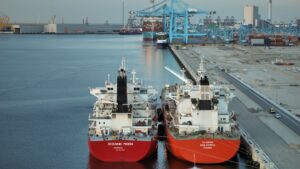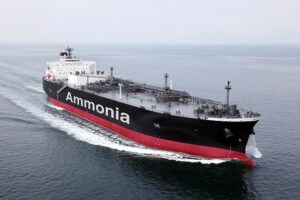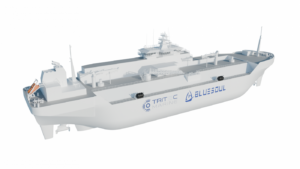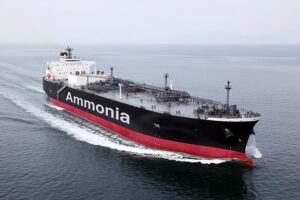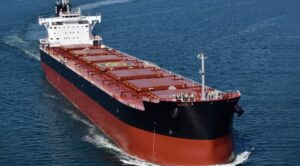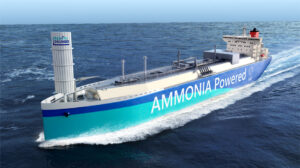US ammonia bunkering vessel design gets go-ahead; commercial operations expected by 2030
The consortium behind the project seeking to establish green ammonia ship-to-ship bunkering on the U.S. East Coast has secured approval in principle (AiP) from classification society ABS for the initial design of ammonia bunkering articulated tug barge (AB-ATB).
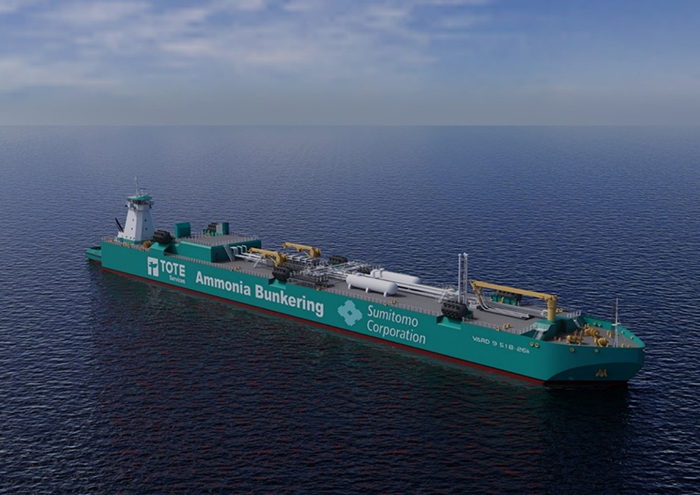
The AiP, said to be the first in the United States, was awarded during the Gastech 2024 conference in Houston for the barge design and engineering delivered by VARD Marine US.
Other members of the consortium include ABS, A.P. Moller–Maersk, Fleet Management Limited, Georgia Ports Authority, Maersk Mc-Kinney Moller Center for Zero Carbon Shipping (MMMCZCS), Sumitomo Corporation, and TOTE Services.
The consortium was formed in March 2023 and has undertaken a feasibility study on ship-to-ship bunkering of reduced emission ammonia along the U.S. East Coast. This includes the development of a cost-effective supply chain for the procurement, transportation, and storage of reduced-emission ammonia fuel, as well as the design of bunkering barge and related supply chain infrastructure.
As described, the barge was designed to be compatible with vehicle carriers including Aurora Class pure car and truck carrier (PCTC) recently delivered to Norwegian shipping company Höegh Autoliners, for bunkering operation at the ports of Jacksonville, Florida, and Brunswick, Georgia as well as a 15,000 TEU ammonia-fueled container vessel whose concept design was created by MMMCZCS, for bunkering operation at the port of Savannah, Georgia.
The consortium members expect this design approval to motivate and encourage the maritime industry to develop and order such types of ammonia-fueled vessel. This approval is also seen as a significant milestone in accelerating the potential of the first U.S. ammonia bunkering vessel, targeting commercial operations by 2030.
“This is an exciting milestone for our feasibility study and project teammates. Having an approved basic design for the AB-ATB is another step toward maturity for ammonia as a marine fuel. ABS is committed to supporting the maritime industry as it pursues low-carbon, more sustainable operations. We have extensive insight into the development and application of ammonia as a marine fuel, and we are proud to share our learnings with this team,” said Panos Koutsourakis, ABS Vice President, Global Sustainability, as a representative of the consortium.
Related Article
-
Maritime industry giants to explore ammonia as green fuel for U.S. East Coast
Research & Development
The world’s first use of ammonia as marine fuel was conducted at Port of Singapore, the world’s largest bunkering hub, in 2024 when the Singapore-flagged vessel Fortescue Green Pioneer was loaded with liquid ammonia, in combination with diesel in the combustion process, from the existing ammonia facility at Vopak Banyan Terminal on Jurong Island for the fuel trial.

